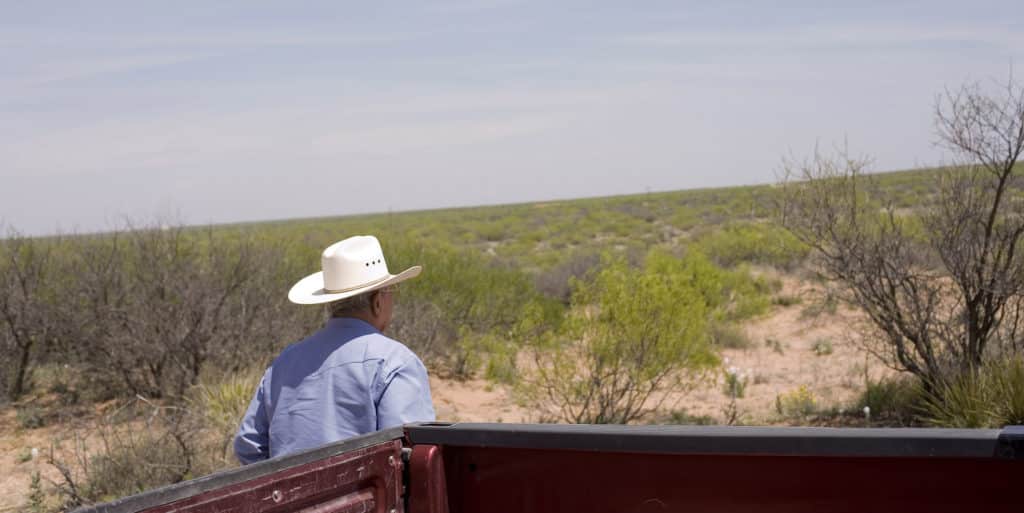This article is courtesy of CoStar News.
Recreational Buyers, Investors Drive Rush to Rural Land
An influx of investors and want-to-be ranchers swooped into rural areas last year to buy land to look at the big Texas sky.
More than half a million acres of rural land traded hands in Texas in 2020, hitting a record $1.69 billion worth of deals, according to data from the Texas A&M University Real Estate Research Center.
Nearly every part of the state saw a spike in deal volume with the number of sales hitting 7,684 deals, a 28% jump from last year. Only the far west Texas area near the energy rig-heavy Permian Basin saw a drop in deals.
The data doesn’t track the motivation of buyers, but brokers said they are seeing an increase in investors looking for a safe place to park cash during an uncertain year, noted Charles Gilliland, a research economist at Texas A&M University Real Estate Research Center, in an interview.
Brokers also are reporting a stampede of urban dwellers searching for a country getaway, a ranch or recreational hunting lands during the pandemic, Gilliland said.
“I was just talking to a broker last week who said a number of his buyers are asking, ‘How long does it take to get to an H-E-B [grocery store] from here?’ So they’re not [all] the ranch-type buyers that these guys have been dealing with for years, they’re different types of folks,” Gilliland said.
The trend toward rural land parallels is similar to migration patterns during the pandemic from urban areas to the suburbs seen in the single-family homebuying and multifamily rental markets.
Across the nation, brokers and agents said there was an increase in interest and prices for rural land last year, according to National Land Realty’s 2021 survey, and that is expected to continue this year.
Last year “was a strong year for land and 2021 is looking to start out the same way,” said Jason Burbage, president of National Land Realty, in a statement. Almost 90% of surveyed brokers are optimistic that land will do quite well over the next year to 18 months and more than 75% believe their business will grow at least 5%, according to the survey.
Many rural land buyers during the pandemic are snatching up property specifically for recreational hunting, continuing an ongoing trend of recreational land buying seen in recent years, he said. In Texas, hunting primarily occurs on rural land and purchasing ranches allows hunters to carefully manage wildlife, deer and exotic game on site, Gilliland said.
It’s not clear how many or if any of the Texas deals were specifically driven by a desire to build homes on the property, since the Texas A&M research center doesn’t track so-called transitional land that developers turn into residential or commercial development sites, Gilliland said.
However, there has been a considerable spike in smaller land deals as more buyers enter the fray. The average deal size shrunk 13% to 1,139 acres, Texas A&M’s research center’s data shows.
The Texas Hill Country in Central Texas continues to be one of the more sought-after regions for rural land buyers, both because of its natural beauty and because of its relative proximity to Austin and San Antonio, he said. Even buyers from the Houston and Dallas areas also dip into the Hill Country, which is closer than the other scenic areas of the states, Gilliland noted.
“The Central Texas area in one quarter this past year had more than 1,000 sales. It never has even come close to that in the past,” Gilliland said.
Overall in 2020, the Austin-Waco-Hill Country region saw 2,364 deals, a nearly 39% jump from the prior year, the research center data found. There were 113,784 acres sold in the Central Texas region, up about 25%.
The data doesn’t track all the transitional land associated with industrial and single-family home developers descending on the Austin area near the future Tesla land site and elsewhere in East and North Austin. But brokers are reporting rising prices for industrial, residential and commercial development land in Austin as well.
Despite the jump in the number of sales in the Austin area, prices barely budged, indicating that buyers were snatching up whatever they could, even lower-quality land that may have had a more difficult time selling in the past, Gilliland noted.
“As this kind of frenzy continues it would not be surprising to see some sizable price increases as well. As a matter of fact, I’m hearing from brokers on some of the smaller acreages that are having bidding wars like single-family homes,” he said. The rural land “market right now is on fire, it’s kind of like the housing market. The housing market right now is going totally bonkers and the same thing is happening with these land sales.”
The northeast area near Dallas-Forth Worth saw the average price per acre rise nearly 4% to $5,036. Total acreage sold surged 27% to 81,137 acres.
Meanwhile, in the Gulf Coast-Brazos area near Houston, price per acre jumped 8.3% to $6,887. The total volume by acreage dropped 6.68% to 35,910 acres, but Gilliland suspects that is because more buyers are purchasing smaller lots in the region. The number of deals in the broader Houston region rose 33%.
West Texas saw total acres sold jump 62% to 121,947 acres while the number of deals closed climbed 40%.
Farther west in Texas near the Permian Basin, land sales shriveled up with falling oil prices. Total acres sold fell 63% to 35,232 acres, and the number of deals dropped 25%.
Outside of that far West Texas region, brokers are continuing to see sales surge into 2021, Gilliland said.
“They have smiles on their faces,” he said.

